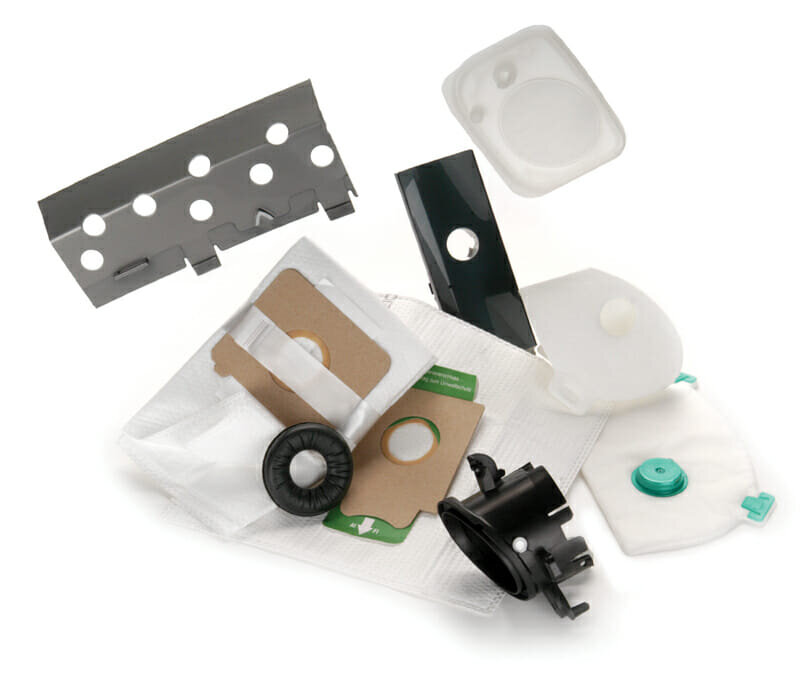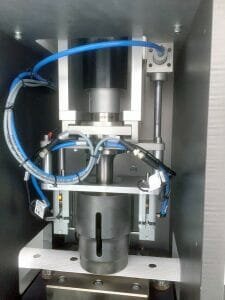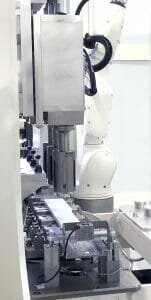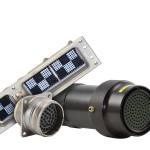The Cut’n’Seal process uses ultrasonic energy to cut or punch out a range of thermoplastic and synthetic type materials, whilst at the same time sealing the edges. Also if required, the process can join the individual components to a secondary item. Capable of cutting and joining a range of substrates, the Cut’n’Seal ultrasonic process is a mature, well established technology already used for a number of applications on filtration, garment, medical, wound care and healthcare products.
In this informative article Telsonic UK’s Martin Frost outlines the principles and benefits of the Cut’n’Seal process which, due to its flexible nature, are leading a growing number of manufacturers to incorporate the technology within their production systems.
There are a large number of items manufactured from multiple layers where it is essential that the finished item has no frayed edges, loose threads or does not de-laminate in use.
In certain cases, in addition to the aesthetics and integrity of the product, there are also instances where the ultra smooth edge produced is an essential attribute for items which will come into close or constant contact with the skin.
The Cut’n’Seal process is capable of meeting all of these requirements which is why the technology is being adopted by manufacturers across multiple inductry sectors
Telsonic UK’s Martin Frost explains: “Examples of where the Cut’n’Seal process has proven to be indispensable include the high volume manufacture of labels, wound care products, feminine hygiene products and filter pads of varying shapes and sizes, such as those used within respiratory support machines for patients suffering from sleep APNOEA. In addition the flexibility of the process means that it can be incorporated into a wide range of manufacturing technologies.”
(Typical Reel / Reel Fed In-Line set up – material indexes through the cut’n’seal station)
For high volume products the typical configuration would be a reel fed indexing system where pre-laminated multi-layer material is passed between the sonotrode(s) and anvil(s). The individual pads, which have been both cut and sealed, are then pushed through the anvil by dedicated pneumatically operated plunger mechanisms and collected in tote boxes, ready for packaging. The skeletol waste of the original material is then fed on to a separate reel on the output side of the machine. This configuration, depending upon product design and reel width, allows for either single or multiple products to be produced each cycle.
Changeover between product types or shapes is achieved by simply changing over the sonotrodes and anvils, and if required, adjusting the position and / or pitch of the tooling. Telsonic’s Cut’n’Seal technology is capable of achieving cut cycles of between 140 / 170 ms representing a very small part of a machine’s overall process and index time.

(Ultrasonic Cut’n’Seal Pads are picked by robot for transfer to upstream assembly into filter housings)
The Cut’n’Seal process is also easily integrated into systems where robots are being used. For example, in this application the robot removes the cut and sealed pads from the anvils and loads them into intermediate trays prior to presentation into filter housings further upstream in the manufacturing process.
Another Cut’n’Seal configuration often employed is that of twin headed systems, but offset sonotrodes and anvils. This utilises wider web substrates where two smaller pads can be produced in a tandem cycle whilst optimising material usage. In a configuration such as this, the reel fed material is typically between 100mm and 150mm wide and between 100 and 150 gsm in thickness. The typical throughput for a system such as this would be a total of 60 pads per minute, dependant upon material type and thickness.
The rapid rise in the demand for surgical type face masks, initiated by the COVID-19 pandemic, brought with it a significant increase in the the number of UK companies diverting their resources to manufacturing these products using automated systems. Once again Telsonics’ ultrasonic technology plays a key role, and the Cut’n’Seal process in particular is used to produce cut and formed mask types such as K95 / N95 and FFP2 / FFP3 variants.

(Dual, offset sonotrodes and anvils maximise productivity whilst optimising material usage)
Martin Frost concludes: “The quality, consistency and short cycle times of the Cut’n’Seal process, combined with the ability to easily configure and integrate the technology to suit individual applications, are just some of the key drivers behind the increasing uptake of Cut’n’Seal as the process of choice for a growing number of manufacturers. In addition, developments in wound care technology with new materials, new feminine hygiene products, plus the demand for increased production of PPE as a result of the ongoning pandemic have together opened up a wide range of new applications for this process which also adds value by delivering a superior finished product.”
Telsonic UK offer a comprehensive range of ultrasonic modules and systems for a variety of , plastic welding, cutting, sealing, cut’n’seal, food cutting, metal welding, packaging, sieving, and cleaning applications within a wide range of industries.










